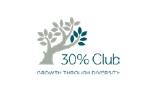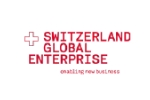The New Normal: COVID-19 Didn’t Change the World of Business … It Just Accelerated It.
Dr. Nairouz Bader, Group CEO of Envision Partnership in a recent interview says:
“We’ve seen a level of digital transformation in the past couple of months that’s unprecedented, but as the figures throughout the past decade have proven, in industries like technology, e-commerce, and telemedicine, this change while it had its acceleration triggered by the COVID-19 crises, it was where business already heading.”
“As COVID-19 impacts every aspect of our work and life, we have seen 2 years’ worth of digital transformation in 2 months. From remote sales and customer service teamwork to critical cloud infrastructure and security, we are working alongside customers every day to help them stay open for business in a world of remote everything.”
In a world of remote everything, businesses with this model at its core have had sales and revenue skyrocket during this crisis, and business consultants around the world are expecting this rise to keep going during and after the recovery phase of COVID-19. Just in April, according to new data from Adobe’s Digital Economy Index, U.S. e-commerce jumped 49%, and as more consumers realize the convenience of e-commerce with an emphasis on safety and the concerns over the pandemic, it’s more likely that consumers will choose to stay online even after recovery.
This is a pretty straight forward question: NO. While some businesses are going to see a decline in revenue, most of them are expected to make a comeback even stronger depending on how well they adapt to where the future was already heading. If you think about it, this has always been the core of businesses since we’ve figuratively and literally, invented the wheel. It’s simple, digital means a measurable decrease in business costs and operation, remote working means less office space to rent, fewer bills and spending. The ‘New Normal’ is Waiting: Are you ready for it?
Let’s first start with your revenue, this crisis has prioritized the needs of the world of tomorrow and brought them today, which has decimated any assumptions and data business leaders relied on to make business decisions. This highly volatile environment requires fast responses that are both well-planned and takes in all available data, so the first move business should take is:
1- Creating a fluid relaunch plan:
This plan will need to take into account the reconfiguration of your product offerings, which might include prioritizing SKUs and increasing promotions of your core products, this plan will take into consideration each detail of your brand, whether it’s distribution, supply chains, consumer segmentation, product development, and opportunities for recovery.
This road-map will require a fluid state, taking into account different directions this crisis might take you and efficient countermeasures for them.
We advise creating a crisis management team of your most trusted advisors and employees to help create this road-map and maintain a high response rate to any upcoming challenges.
This will also give business leaders enough time to manage all aspects of the organization, and most importantly reassess investments and prospects, while communicating with stakeholders and looping them in on strategies your business will need to implement in response to new customer demands and risks you’ll need to make when it comes to cost and value management.
2- Let your consumers know you’re safe:
This stopped becoming an option long ago, making sure your consumers understand that your products and services are safe is a necessity, and not prioritizing safety across each aspect of your organization can immensely hurt your brand identity, you can do it through implementing the latest safety measures while also spreading public awareness.
Some examples of brands doing that include Emirates Airlines introducing a thermal screening of all passengers boarding their flights, while Accor hotels chain has created new hygiene and safety certification labeling and self-sanitizing gates all over their facilities.
3- Keep up a stable workplace:
Workplace stress, emotional fatigue and lack of direct communication are at an all-time high, so maintaining the health of your organization and employees will highly correlate to how successful your day-to-day operations are functioning, and the surveys and numbers coming in from our partners are only confirming it, with the data we have accumulated we believe these are the main points you need to address:
Liquidity concerns are pushing HR departments around the world to consider worker furloughs, layoffs, or terminations. It can be seen clearly with how unemployment rates are skyrocketing and exceeding all previous expectations.
This will push your employees into a state of instability that will reflect on the performance of your organization, we understand that the economic challenges are there, and these actions are unavoidable for some businesses. Some businesses are taking another approach, and they understand that cutting costs to preserve profits may serve only to sink them further into recession and that the global nature of this crisis offers some protection from competition.
So, as you reconfigure your operations to stay afloat, bring your employees in on the challenges the organization is facing, and disseminate your company goals and plans to help them feel safe because it’s more important now than ever.
B- Building Resilience:
The World Health Organization describes stress as the “global health epidemic of the 21st century” and as recent events might very well redefine that statement, stress will remain prevalent and continue to rise with the latest restriction affecting mental stability and well-being.
Start now, it’s the time you make cultivating resilience in your organization a priority to manage workplace stress and keep your employees working efficiently with clear and healthy perspectives. We suggest taking a real step into incorporating programs like the “Resilience to Brilliance” by Envision Partnerships.
With the help of technology and remote-conferencing platforms such as Zoom and Google Meet, a growing number of business leaders are adding home and more flexible working arrangements, and as they work to stabilize their organization, and identify areas of course correction, it’s understandable that at some point there will be a focus on getting people back to work.
It’s becoming possible to imagine a world of business where human interaction is minimized, but not eliminated. Businesses will reopen, people will pop back in stores and many patients will need to communicate with doctors directly, and the in-store shopping experience will always be relevant. Decision-makers will need to reallocate investments, rethink strategies, and how to be better equipped to survive in the “remote” world of today.





